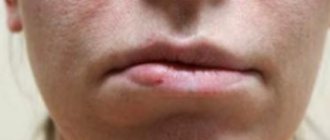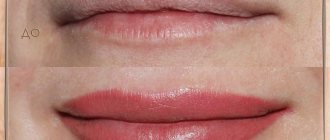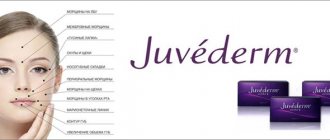Yana Ashchina Complications in cosmetology
Hi all. In this article I will tell you what the Tyndall effect is in cosmetology, why it occurs and how to remove it.
Patients often come to me with the Tyndall effect and hypercorrection of the nasolacrimal trough. This problem is very disturbing and causes a lot of discomfort. Since she looks from the outside - as if a person abuses alcohol.
This problem occurs as a result of an incorrectly selected or incorrectly introduced filler by a cosmetologist. Most often in the area of the nasolacrimal groove.
In general, this is not such a big problem and it can be solved by eliminating the filler by introducing a special enzyme. However, with the removal of the drug, the volumes replenished by it may disappear and the procedure for placing the filler will have to be repeated.
Let's look at this complication so that you know how to prevent it or what to do if you encounter it and not worry too much.
For those who like to watch videos, I have a video dedicated to this issue on my channel:
What is the Tyndall effect
This effect has physical and chemical properties and we see it every day in our everyday life.
For example: the sun shining through the dense crown of trees, light shining through fog, shining a certain beam of light through dense and uneven textures.
Therefore, the Tyndall effect in cosmetology is the translucency of the filler in the area of its injection (drug administration).
To put it simply, this is a blue glow of filler under the skin in certain daylight conditions.
Most often, this complication occurs in the periorbital (area around the eyes) area when a cosmetologist corrects the nasolacrimal groove.
On the lips
Recently, an increasing number of girls are turning to cosmetologists to increase their lip size. Some guys also follow this fashion. To increase the volume of the lips, the doctor injects hyaluronic acid with a needle.
If immediately after the injection or after some time swelling, facial asymmetry begins to appear, and the lips in some places become blue-black or gray, then these signs indicate the Tyndall effect. This side effect on the lips can be accompanied by pain and discomfort while eating.
Sometimes swelling goes away after a few days without medical intervention.
This is due to the high sensitivity of the skin of the lips. Typically, subcutaneous tubercles have an oval shape. It is impossible to completely hide the manifestations with decorative cosmetics, even if you use matte lipstick. When the Tyndall effect occurs in the lip area, it usually resolves within 2 months.
Be sure to read: Endosphere therapy: what it is, effectiveness, contraindications + reviews and before and after photos
Some girls expect the side effect to disappear on its own. But you can contact a specialist to quickly remove excess filler using hyaluronidase. At the first symptoms, you should in any case consult a doctor so that an infection does not spread in the tissues, which can lead to necrosis.
How to remove the Tyndall effect
To eliminate the Tyndall effect, you simply need to remove the filler from the injection area - with drugs based on an enzyme that destroys hyaluronic acid, for example - Lidase.
It works as follows: the enzyme we introduce begins to break down hyaluronic acid into water. Water is a natural chemical compound for the body. Decay products are excreted through the genitourinary system. The complication completely disappears after 6-72 hours.
The most important thing is to correctly remove not all the drug, but only its excess. Correction of the site of the complication should be minimal in order for the effect of the filler to be maintained. If the filler is completely removed from this area, it will have to be injected again, so the patient needs to be prepared for this.
The cosmetologist selects an enzyme to eliminate the complication. It is advisable to contact the cosmetologist who initially injected the filler, since only he knows what kind of filler was used, what injection technique was used and at what depth the drug was injected. It will be easier for a cosmetologist who has caused a complication to remove excess filler from the placement area.
The administration of Lidase does not cause any damage to tissues. These are all myths found on social media. networks: if we introduce Lidase, we destroy collagen or tissue shrinkage occurs, the drug seems to “eat up” the tissue. This is all untrue! The tissues remain exactly the same as before the enzyme was introduced. This is an absolutely safe procedure for the body.
Personally, I think that if the work is not done well, the fillers should be removed immediately. Since this gives the patient a psychological feeling of discomfort in society. It always seems to him that others notice this defect and the patient suffers. Why wear this on yourself if this complication can be solved with one injection. Moreover, the whole procedure takes 5-10 minutes and the filler disappears without a trace.
Most often, patients come to me with the Tyndall effect in the nasolacrimal groove. Since the unwanted filler stands and compresses the vessels, microcirculation and tissue trophism are disrupted. Trophism is the nutrition of tissues through blood vessels. Unwanted filler lies and compresses the tissue, especially if there is a lot of it and it is injected too superficially. Therefore, after we remove the filler, I give my patients mesotherapy with vascular drugs that restore tissue trophism. It will be possible to re-apply filler to correct the nasolacrimal trough in two weeks.
Sometimes it happens that a person does not know that he has the Tyndall effect. Not all cosmetologists admit their mistakes and honestly tell their patients that the work was not done well.
Fibrosis after hyaluronic acid
Fibrosis is a thickening of connective tissue that forms after the introduction of hyaluronic acid. It can form as a complication of contouring or as a consequence of the body’s individual reaction to the injected substance. The main causes of fibrosis are:
- development of the inflammatory process at injection sites;
- violation of manipulation technique;
- rejection of a foreign substance by the body;
- movement of injected hyaluronic acid under the skin;
- vascular damage (puncture);
- violation of the rules of the rehabilitation period by the patient.
Pronounced symptoms of fibrosis are:
- the appearance of hard, dense formations at injection sites;
- the formation of a clearly defined tumor that does not move with intense palpation;
- mild discomfort in areas of fibrosis formation.
This complication after the introduction of hyaluronic acid is severe and late, occurring on the 3-5th day of the recovery period. With multiple compactions that are determined visually, doctors talk about granuloma - most often it occurs during manipulation of the lips.
Fibrosis of facial tissues after filler
The first symptoms of fibrosis of facial tissues after filler appear on days 4-6 of the recovery period. Most often present during anti-aging procedures on the lips, but can begin to develop anywhere. Treatment of fibrosis involves the use of the following:
- steroid hormonal drugs - injected directly into the changed areas of facial tissue, helps only in case of immune rejection of hyaluronic acid;
- cryodestruction and electrocoagulation procedures are effective only against superficial seals;
- laser and radio wave therapy - at least 5 procedures will be required and no doctor will guarantee a positive result.
Laser therapy
Fibrosis in the nasolabial lips after fillers
If signs of fibrosis appear in the nasolabial lips after fillers, then the only radical solution to the problem is to receive injections of hyralunidase: an enzyme that dissolves hyaluronic acid and ensures its rapid removal. No amount of physiotherapeutic procedures will help solve the problem.
If the patient does not consult a doctor in time about fibrous formations in the nasolabial lips, then a full-fledged surgical intervention will be necessary to correct the situation. It can lead to additional complications:
- wound infection;
- bleeding;
- tissue necrosis.
Fibrosis
Will the complication go away on its own?
Unfortunately, this complication will not go away on its own. Biodegradation of the drug (biological breakdown) can take from one to two to three years.
In my experience, there may be cases where the Tyndall effect has been observed for four years in a patient's nasolacrimal trough. This occurs due to the fact that the body encapsulates (creates a protective shell, for isolation, closing something foreign in order to exclude the influence) of a foreign substance introduced to it - filler. In cases of encapsulation, the Tyndall effect will never go away. Therefore, we introduce enzymes to break down the filler.
If an incorrectly injected filler has the property of hydrophilicity (the ability to attract and retain water in the tissues), then we will often observe swelling in the injection area. It will intensify in the morning or evening, especially if the patient eats something salty or spicy.
My advice is that you shouldn’t wait until the filler “dissolves” on its own. He must be removed immediately.
Useful video
Watch this video about what to do in case of vessel embolism during contour plasty:
Similar articles
- How to remove fillers under the eyes, is it possible to remove...
Sometimes you have to figure out how to remove fillers under the eyes. In this case, Lidaza will come to the rescue, but in the most difficult cases, surgical methods can also be used. Read more - Angles of the lower jaw with fillers: how the correction is carried out...
Even famous personalities correct the angles of the lower jaw with fillers. This is a kind of lump formation, an alternative to augmentation. The drug administration regimen is simple, and the result is a masculine expression in men and a “breed” in women. Read more
- Biorevitalization and its consequences for the face: general...
Although biorevitalization is considered quite safe, the consequences can occur even after a few years. For example, complications after the introduction of hyaluronic acid for the face are sagging skin due to the fact that the body itself refuses to produce the substance. Read more
- Lip mesotherapy: features of fractional…
Lip mesotherapy is performed to increase volume and even out the contour. There are fractional ones with tints for enlargement, non-injection ones with hyaluronic acid, and also with a toning effect. The before and after result changes your appearance dramatically. Read more
- Etermis - a filler with a strong effect: features...
Etermis is a filler developed by Merz. There are three types - 2, 3, 4, each of which has its own impact on problems and differs in the duration of action. For example, if injected into the lips, the effect can last up to a year. Read more
Drug treatment
Superficial injection of hyaluronic acid can cause the Tyndall effect, which is expressed in small gray-blue hematomas at the injection site. This is especially noticeable in daylight. In this case, there are 2 solutions. Each of them has its pros and cons.
| Treatment options | Advantages | Flaws |
| Natural absorption of fluid |
| It is also necessary to consult a doctor so that he can monitor the condition of the skin. If the condition is not controlled, tissue necrosis may develop. |
| Medication |
|
|
With natural resorption, the treatment time depends on many factors. For example, from the injection site. Usually the drug dissolves faster on the lips, but the area under the eyes has very thin skin, so the time for complete disappearance can reach 2 years.
A more popular method is medication. To get rid of the Tyndall effect, hyaluronidase is usually administered.
Under the eyes
Hyaluronic acid is often injected under the eyes to achieve the following goals:
- Improve skin condition.
- Get rid of wrinkles.
- Increase skin elasticity.
- Remove dark spots under the eyes.
The last reason is the most popular. But the skin in this area is very thin. Because of this, when hyaluronic acid is injected into this area, the likelihood of any side effects occurring is highest. The skin is very sensitive, so the cosmetologist administers an anesthetic half an hour before the procedure.
Next, the area under the eyes is treated with an antiseptic. The injection is administered according to a special scheme for the eye area to avoid mistakes. The insertion site is sealed with a special plaster to prevent infections.
To prevent various complications, it is recommended to apply ice to the area where the gel is introduced; this will also help reduce swelling. Swelling most often occurs within 2-7 days. But to determine its nature, you need to re-visit an aesthetic medicine specialist after 1-2 days.










